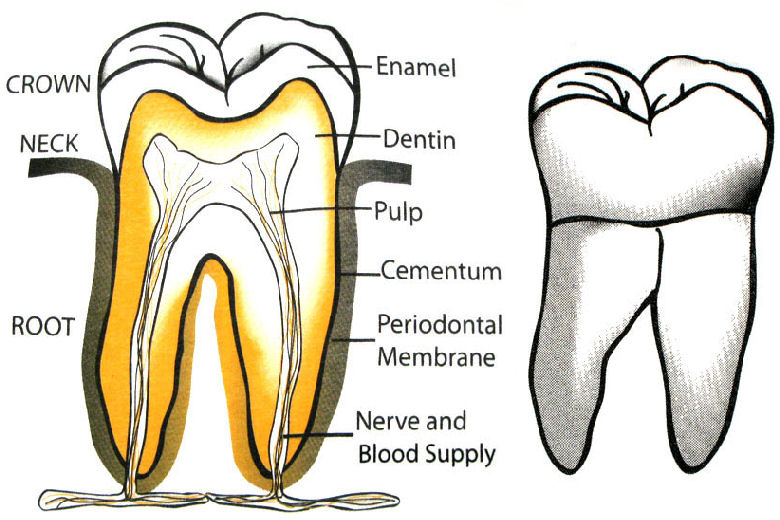217.WHY DO OUR TEETH DECAY?
Among the lower animals, there is a whole succession of teeth throughout their lives. As teeth are fully developed and used up, they fall out and new ones take their place.
Man, however, has only a single replacement of his teeth. By the time a baby is about two years old, it has a total of 20 teeth, called the milk teeth.
Beneath these milk teeth, there is a second series of teeth which begin to appear after the age of six. The milk teeth are replaced by about the age of twelve and then more teeth appear until the adult finally has his full set of 32 permanent teeth. Since we don’t get another chance at new teeth, it is important to keep them healthy and free from decay.
The enamel is where decay usually begins. Let us say that some defect appears in the enamel. It can be an almost invisible opening, but since we always have bacteria in our mouth, they soon find this break in the surface and settle under the enamel.
They cannot eat the enamel, but they can feed on the juicy dentine and the lymph which is in the dentine canals. Soon they erode the walls of the canals, and a cavity is created beneath the enamel.
This may go unnoticed for some time, but if the wall of the tooth becomes thin as a result of the work of the bacteria, then we notice it very quickly. This is because heat and cold can now penetrate more strongly to the pulp cavity. The pulp occupies a hollow space in the center of the tooth and contains nerves. These nerves are stimulated by the heat or cold. When a tooth feels sensitive to heat or cold, you can be pretty sure it’s a danger signal that decay is taking place.
When the bacteria penetrate through the dentine canals into the pulp cavity, they find a perfect feeding and breeding ground. Now we get a toothache. The decay of the tooth continues, the network of vessels that supply food to the tooth wither away, and the tooth, no longer nourished becomes a dead shell.
Have your teeth examined regularly by your dentist!



Leave a Reply